

Cathedral

Münster Unserer Lieben Frau
Around 100 AD, the first Romans settled on the site. Its name, originally Constantia, comes from the emperor Constantius Chlorus who fought the Alemanni in the region and fortified the town.
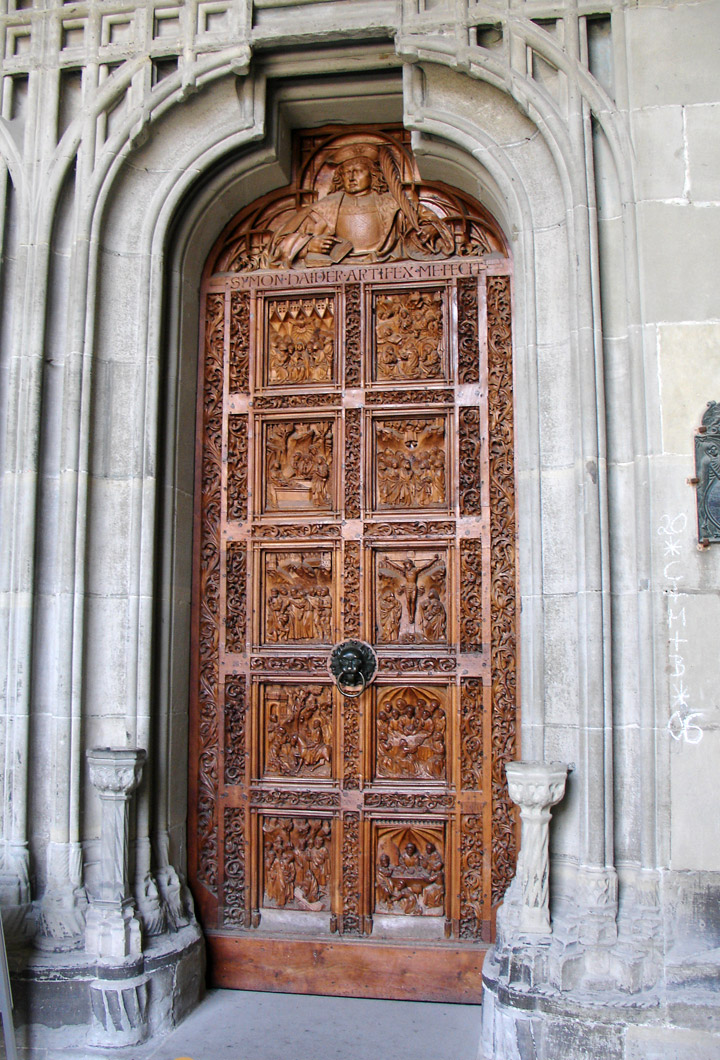
cathedral door
Probably in 585 the first bishop took residence in Konstanz and marked the beginning of the city's importance as a spiritual center. By the late Middle Ages, about one fourth of Konstanz's 5,000 inhabitants were extempt from taxation on account of clerical rights.
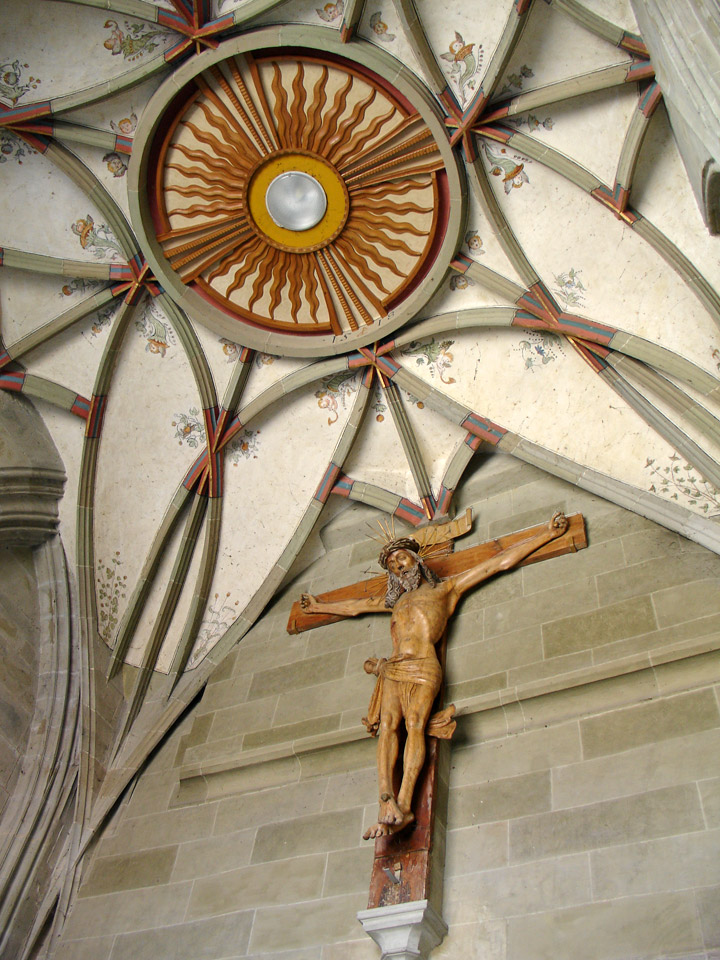
Trade thrived during the Middle Ages; Konstanz owned the only bridge in the
region which crossed the Rhine, making it a strategic place. Their linen
production had made an international name and the city was prosperous. In 1192,
Konstanz got the status of Imperial City so it was henceforth subject only to
the emperor.
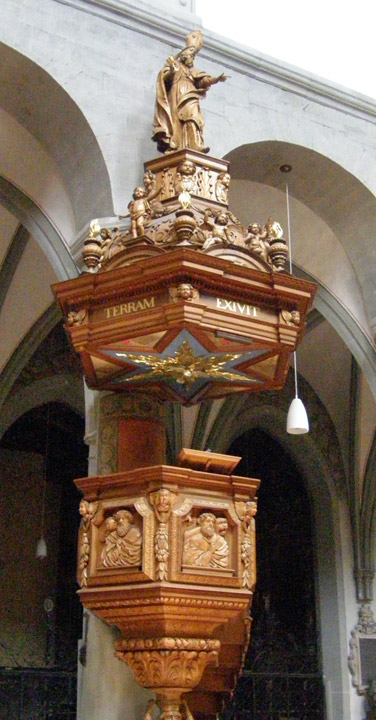
pulpit
In 1414-1418 the Council of Constance took place during which, on July 6, 1415, Jan Hus was burned at the stake. It was here that the Papal Schism was ended and Pope Martin V was elected during the only conclave ever held north of the alps. Ulrich von Richental's illustrated chronicle of the Council of Constance testifies to all the major happenings during the Council, as well as showing the everyday life of medieval Konstanz. The Konzilgebäude where the conclave was held can still be seen standing by the harbour. Closeby stands the Imperia, a statue that was erected in 1993 to remind of the Council.
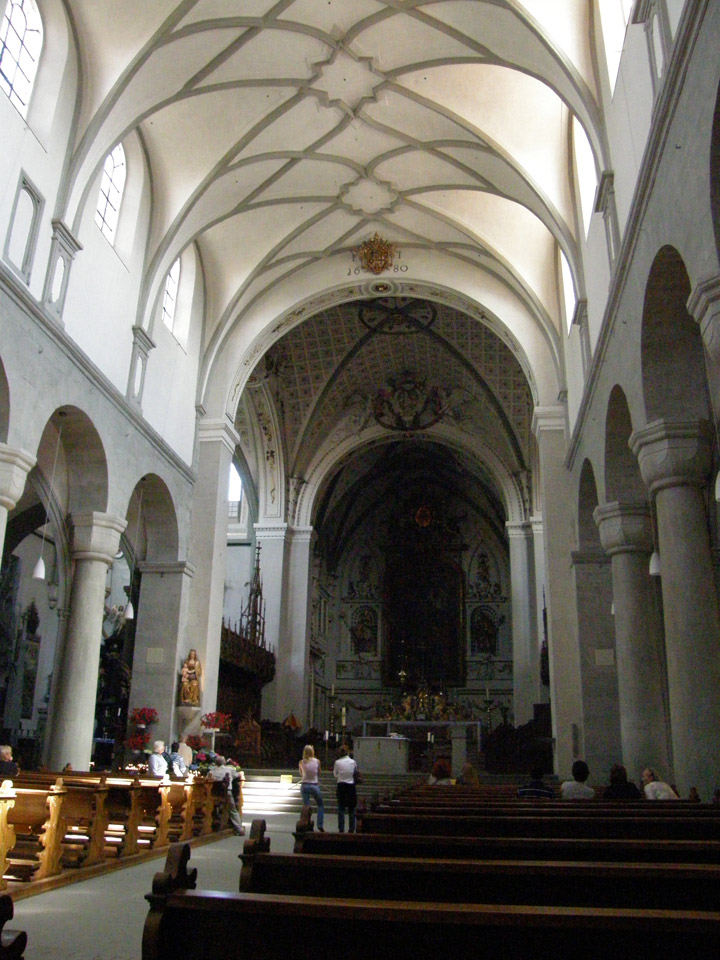
the cathedral
In 1460 the Swiss Confederacy conquered the Thurgau, Konstanz's natural hinterland. Konstanz then made an attempt to get admitted to the Swiss Confederacy, but the forest cantons voted against its entry, fearing an overmight of the city cantons. Konstanz then entered the Swabian League instead. In the Swabian War of 1499, Konstanz lost its last privileges over the Thurgau to the Confederation.

the organ
The Reformation took hold in Konstanz in the 1520s, headed by Ambrosius Blarer. Soon the city declared itself officially Protestant, pictures were removed from the churches, and the bishop temporarily moved to Meersburg, a small town across the lake. However, in 1548 Emperor Charles V imposed the Imperial Ban on Konstanz and it had to surrender to Habsburg Austria which had immediately attacked. Thus, Konstanz lost its status as imperial city as well as the last remainder of its former glory.
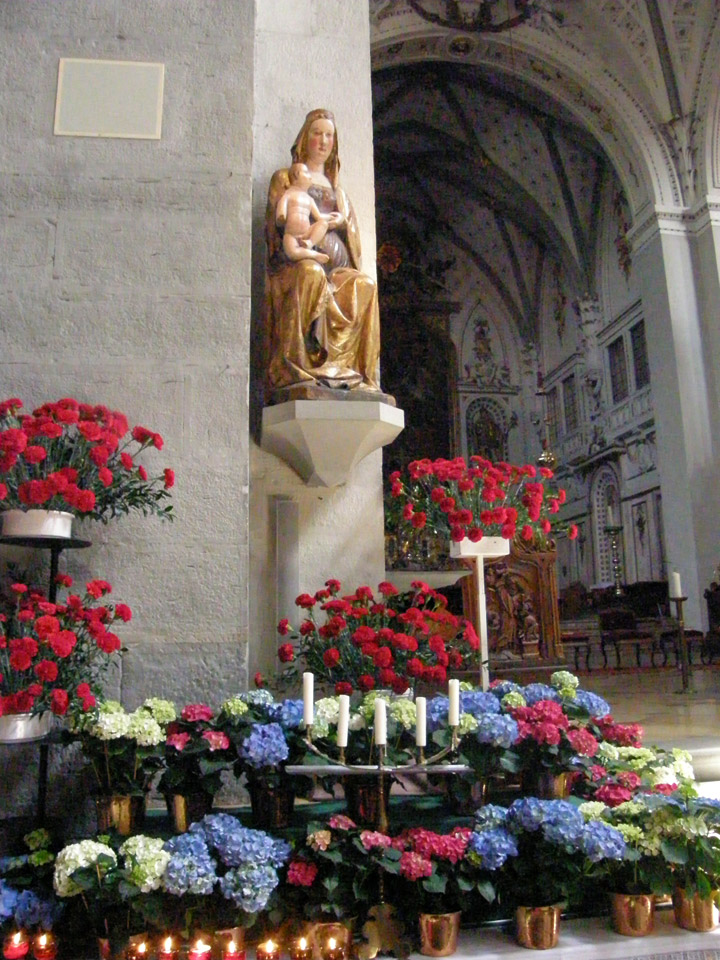
honored with flowers
The new Habsburg overlords were eager to re-Catholicise the town and in 1604 a Jesuit College was opened. Its accompanying theater, built in 1610, is the oldest theater in Germany still performing regularly.
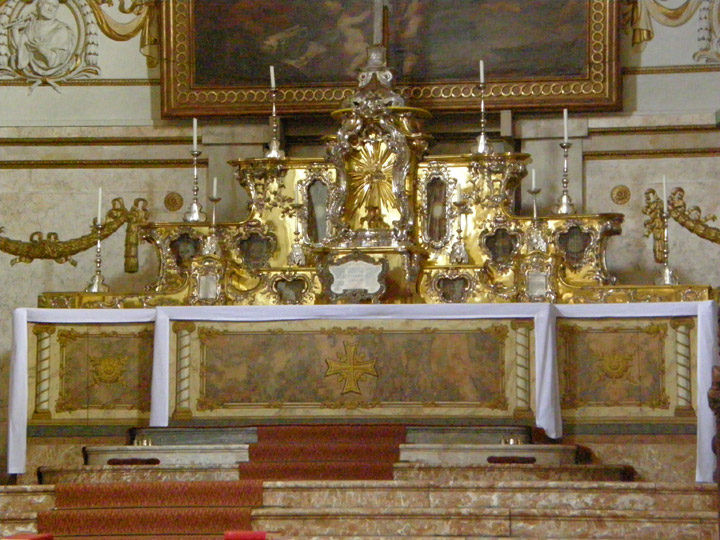
In 1821, the Bishopric of Constance was dissolved and became part of the
Archdiocese of Freiburg.
Photos of the Stained Glass Windows
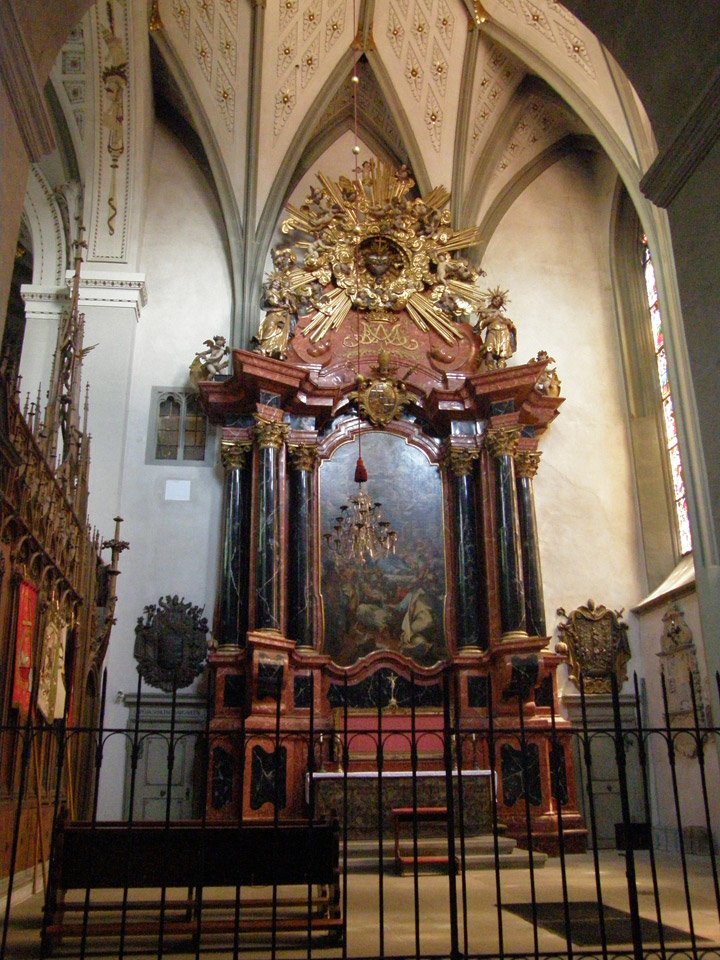
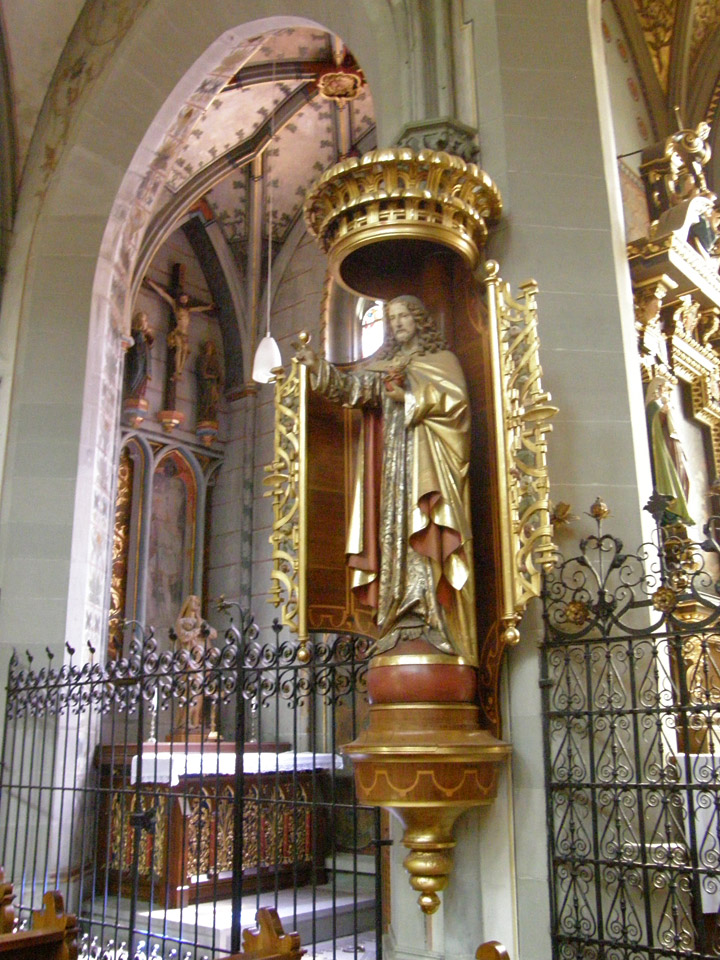
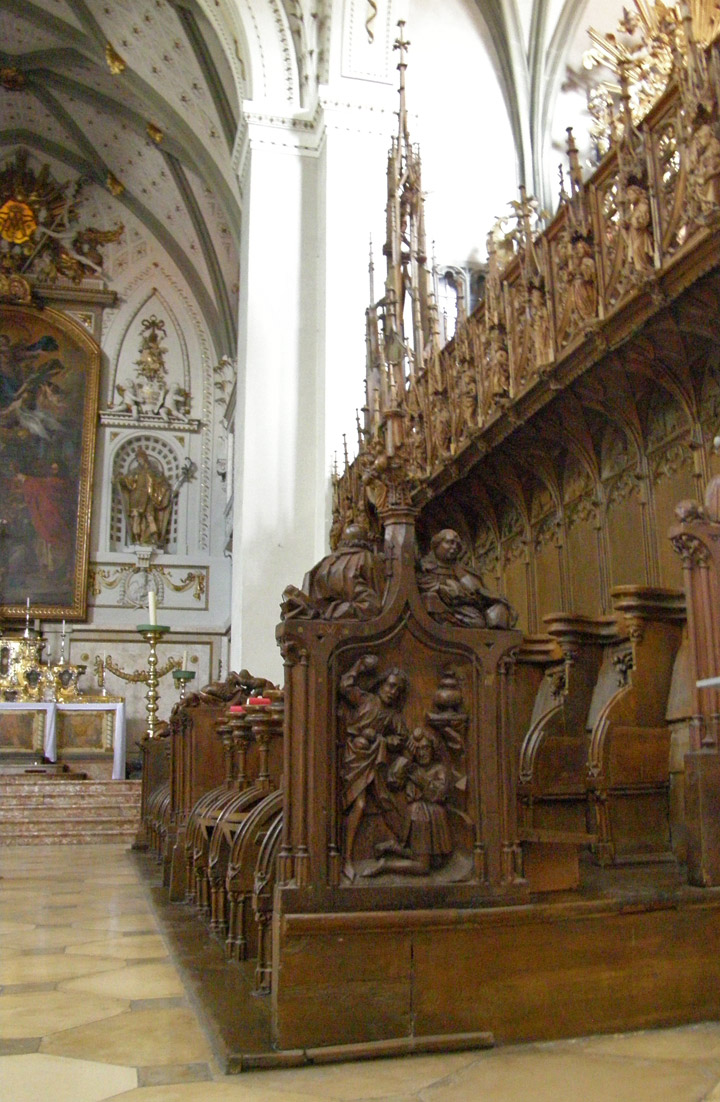
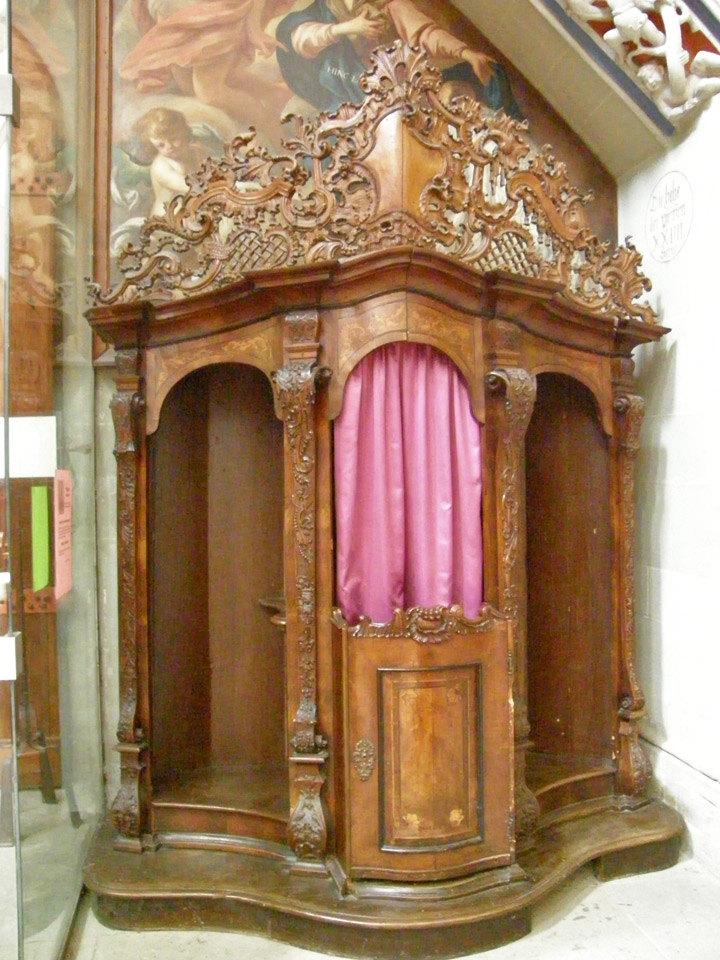
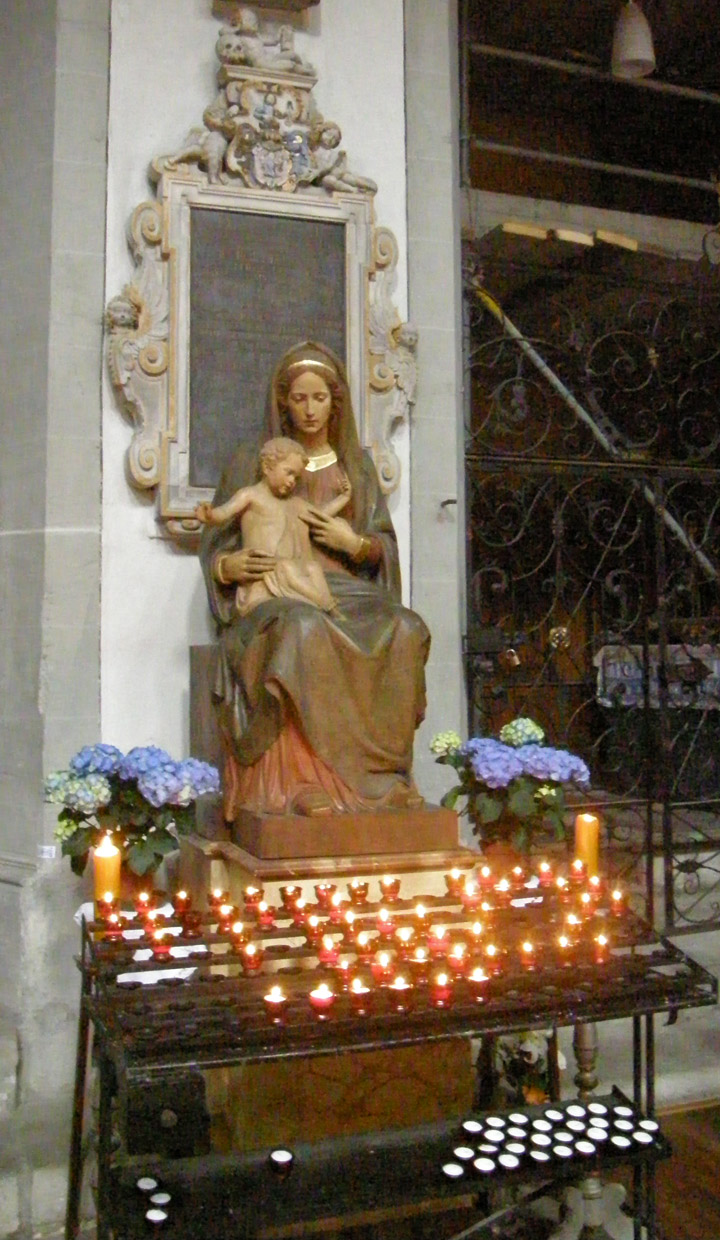

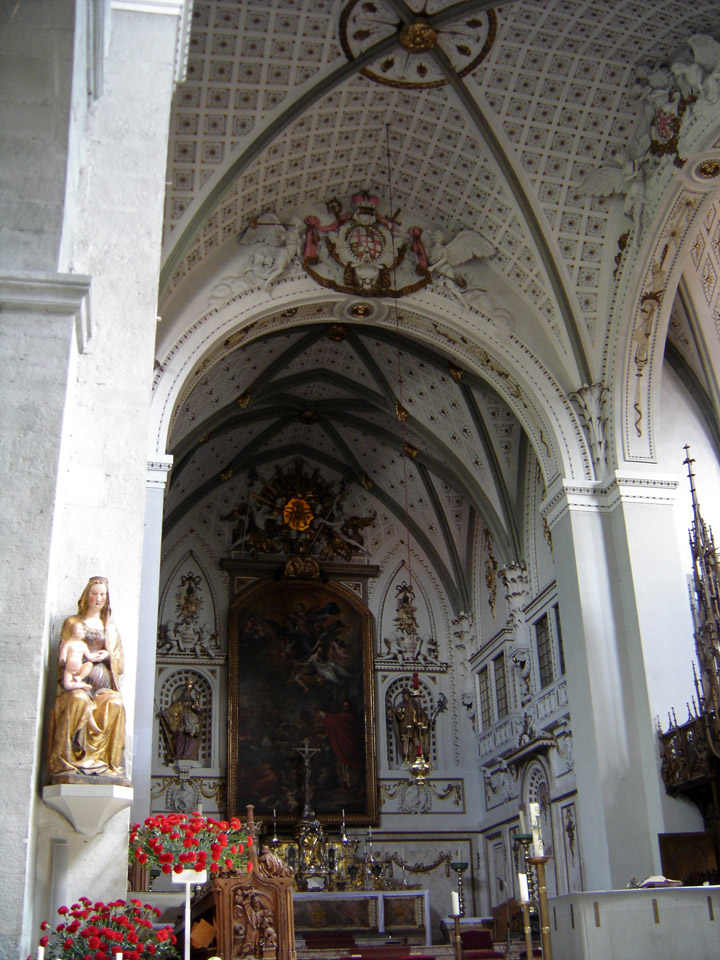

late Gothic staircase
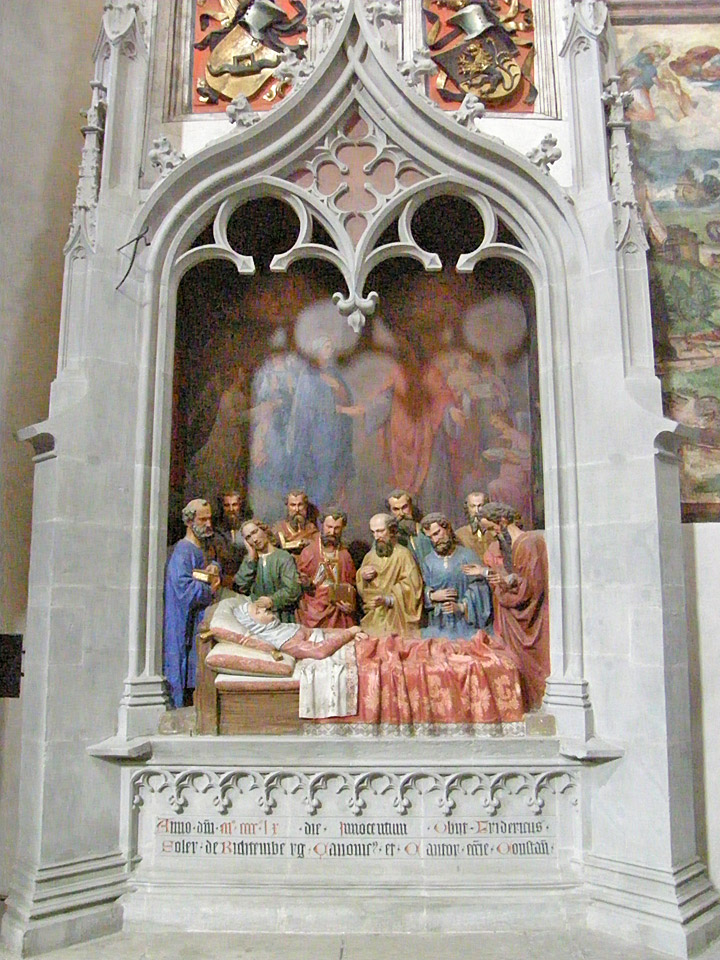
death of Virgin Mary